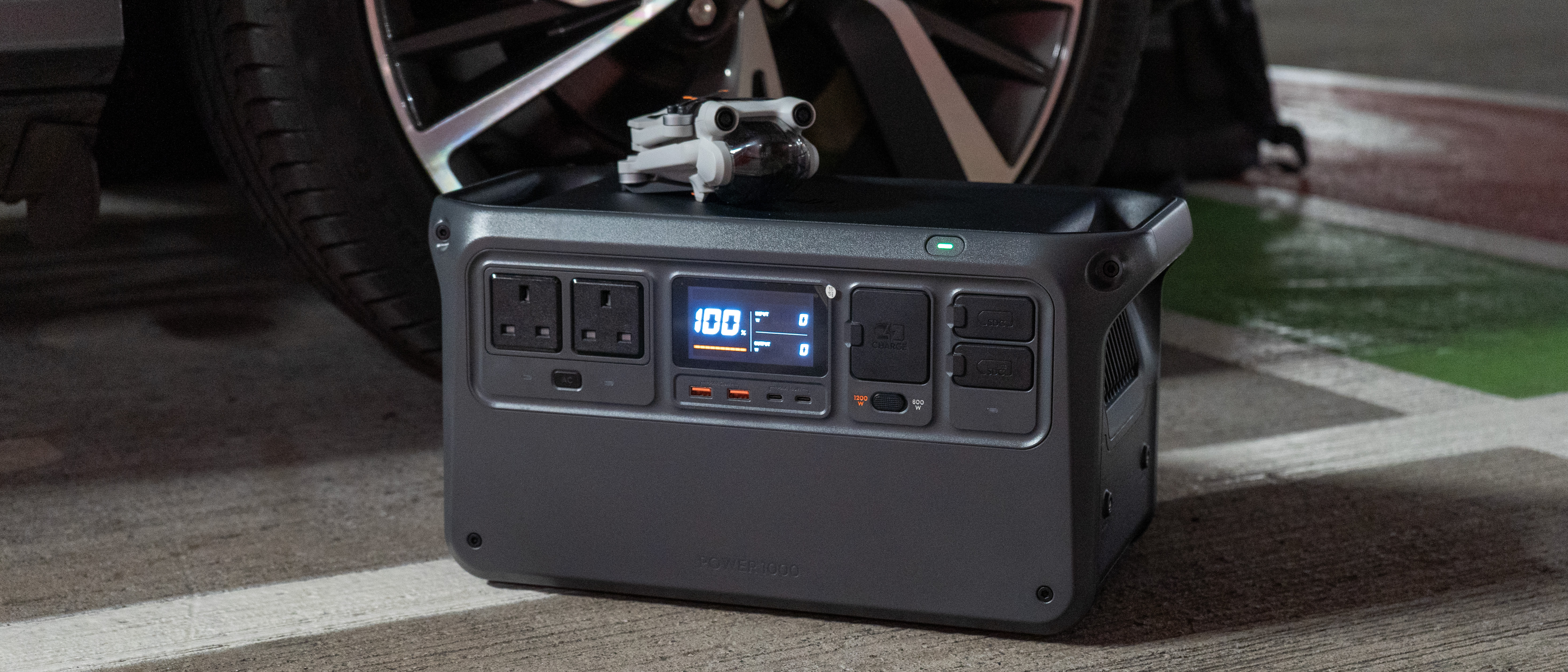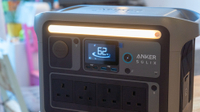Digital Camera World Verdict
Solid, well-built power station with good connectivity that really delivers the power, but it's a bit bare bones. DJI might be the dominant force in drones, but there are more sophisticated power brick alternatives out there. Nonetheless the basics are well covered and, of course, there is extra love for drone users!
Pros
- +
Rugged, well-built power station
- +
Clear display
- +
Fast charging or slower option
- +
DJI accessories for different drones
- +
Good range of ports
- +
Delivers power at good wattages
Cons
- -
No built-in light
- -
No wireless charging for phones
- -
No app
- -
Lacks battery health information
Why you can trust Digital Camera World
Large power banks – or power stations – are a handy tool for creators powering lights and recharging drones away from the grid, which might explain why DJI got into the game.
They're also a staple amongst camping enthusiasts, as well a very useful think to have around the home just in case – a device around this size can power an 'American Style' family fridge freezer all night should there be a power cut.
It is one of two options from DJI – there is also the DJI Power 500 which offers similar functionality but stores half the power (and is, consequently, a lot easier to carry!)
DJI Power 1000 Price
This is where value is hard to pin down – the launch price of $999 is competitive, but there was a significant launch offer in the US – around 40% off – which made it extremely interesting for American customers. So the goal now is to see if you can still find this!
In the UK the price is £879, which is still very competitive for a 1kWh battery. And if you're in Australia, it will set you back AU$1,369 at full price.
DJI Power 1000 Specifications
| Power | 1024 kWh |
| AC Output | 2 sockets, up to 2200W continuous / 4400 peak |
| USB Output | 2x USB-A 24W each + 2x USB-C 140W each |
| SDC | 1x + 1X SDC Lite |
| Input | 1X AC |
| Weight | 13Kg |
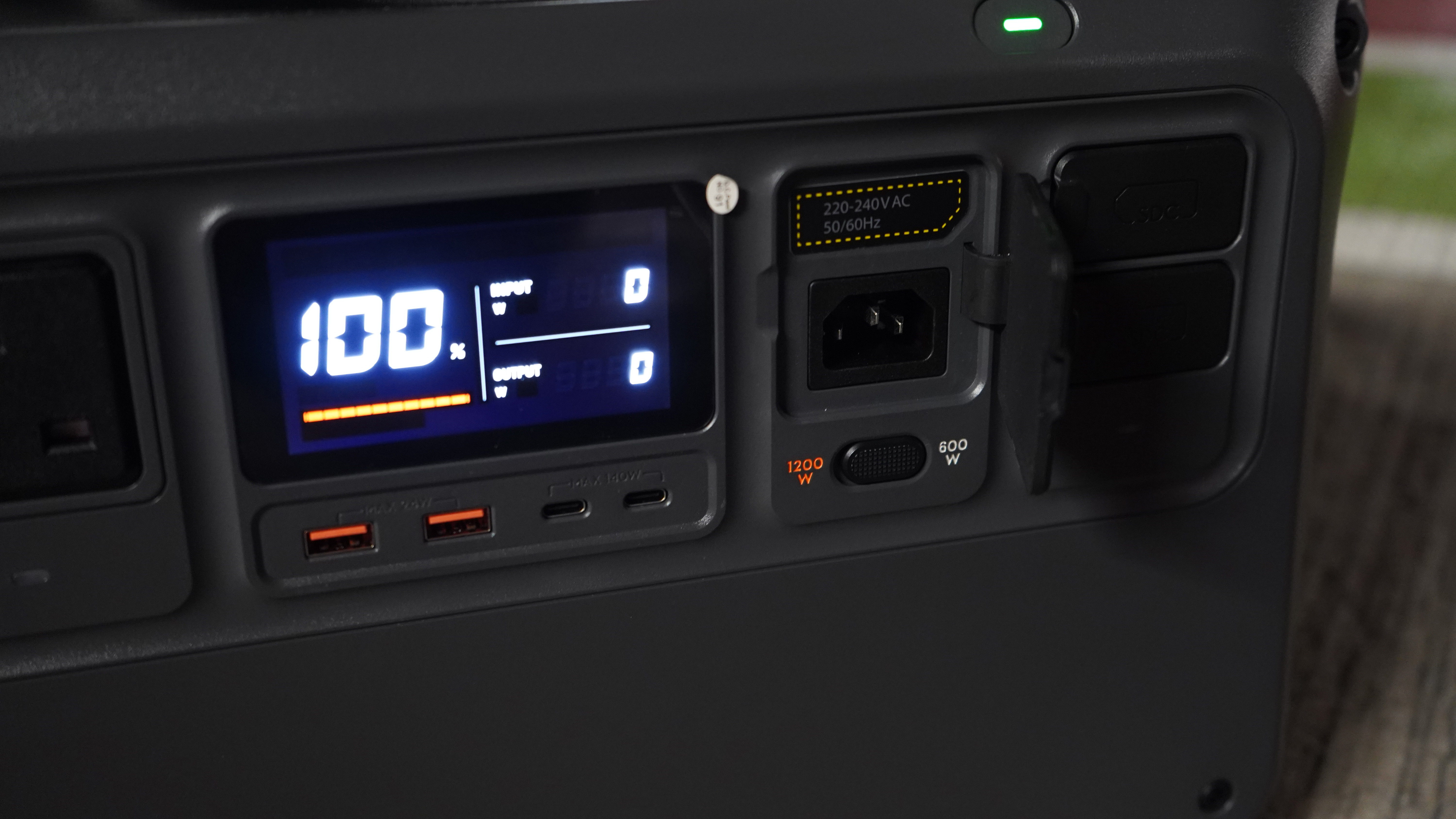
DJI Power 1000: Build & Handling
The Power 1000 is a simple beast, well built with what feels like good quality plastics on the outside. There are nice rounded handles that are difficult to hurt yourself on – no sharp edges. It's not light, either, rocking in at a massive 13Kg (that's the weight of a camping gas bottle) and around 45cm / 17.6 inches long. For a sense of scale, some of my photos show it with a DJI Mini 3 Pro sat on the back.
That drone simply plugs into the USB-C port to charge the battery – or I can plug the charging hub into the USB-C, and the maximum of 140W is delivered via that connection so charging is as prompt as at home. If I'm not flying, I can plug the drone into one of the USB-C ports, and the hub into another and charge two batteries at once – that'll be drawing up to 280W (the battery doesn't slow down until the load is much higher).
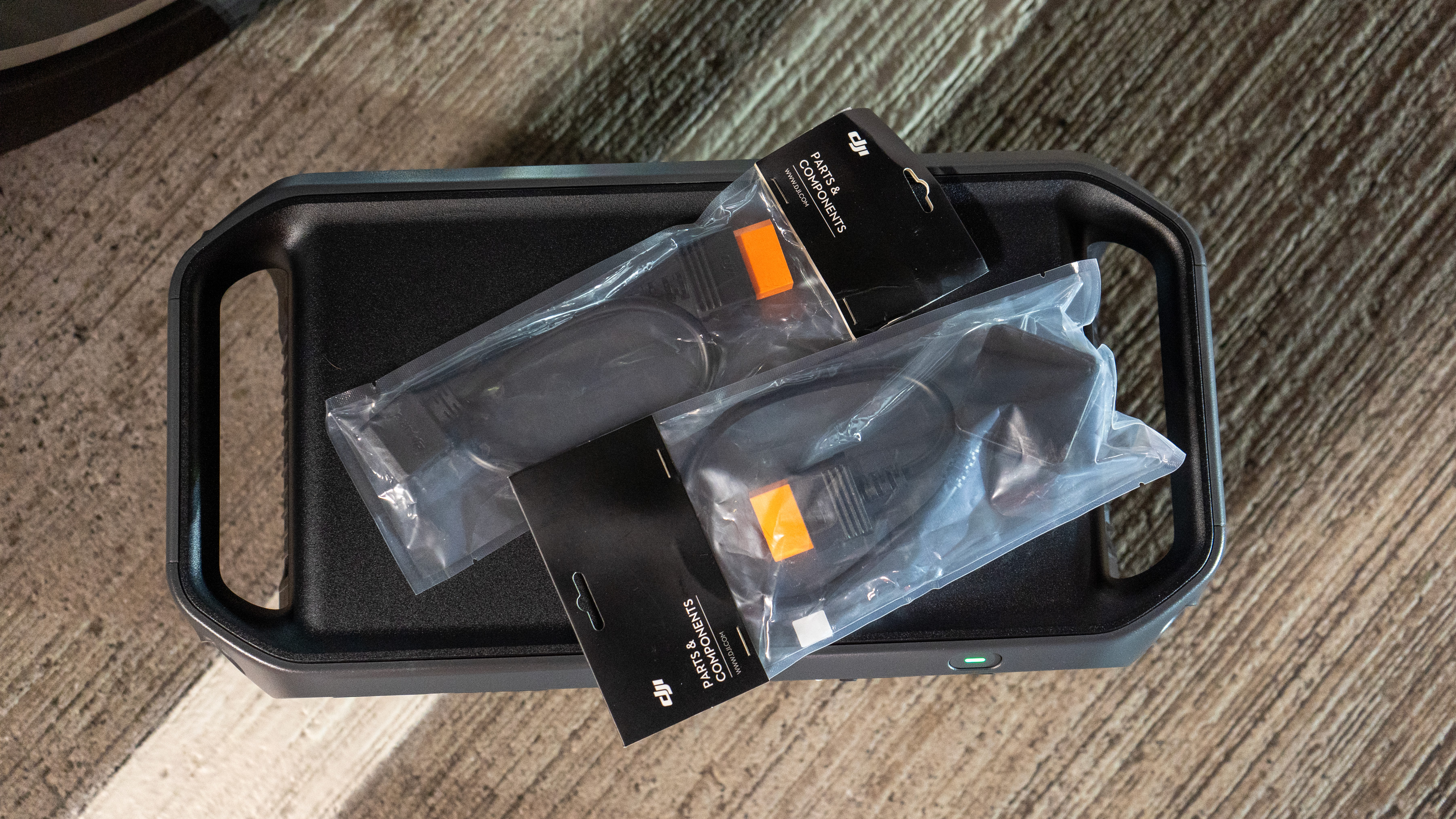
If you're flying a DJI Air, Mavic 3, or an Inspire 3 you have the option of buying special adapters at $19 a piece which plug into the SDC sockets (at the right-hand end). These speed things up as they can deliver more watts, and display charge time data on the display.
Design-wise, all the business happens on a single side of the box, which is appreciated, and some of the sockets live behind rubber seals. It really is as simple as the photos show.
One nice touch though – the power button (with the green light) makes the classic DJI beep-beep-beep noise when you turn the device on!
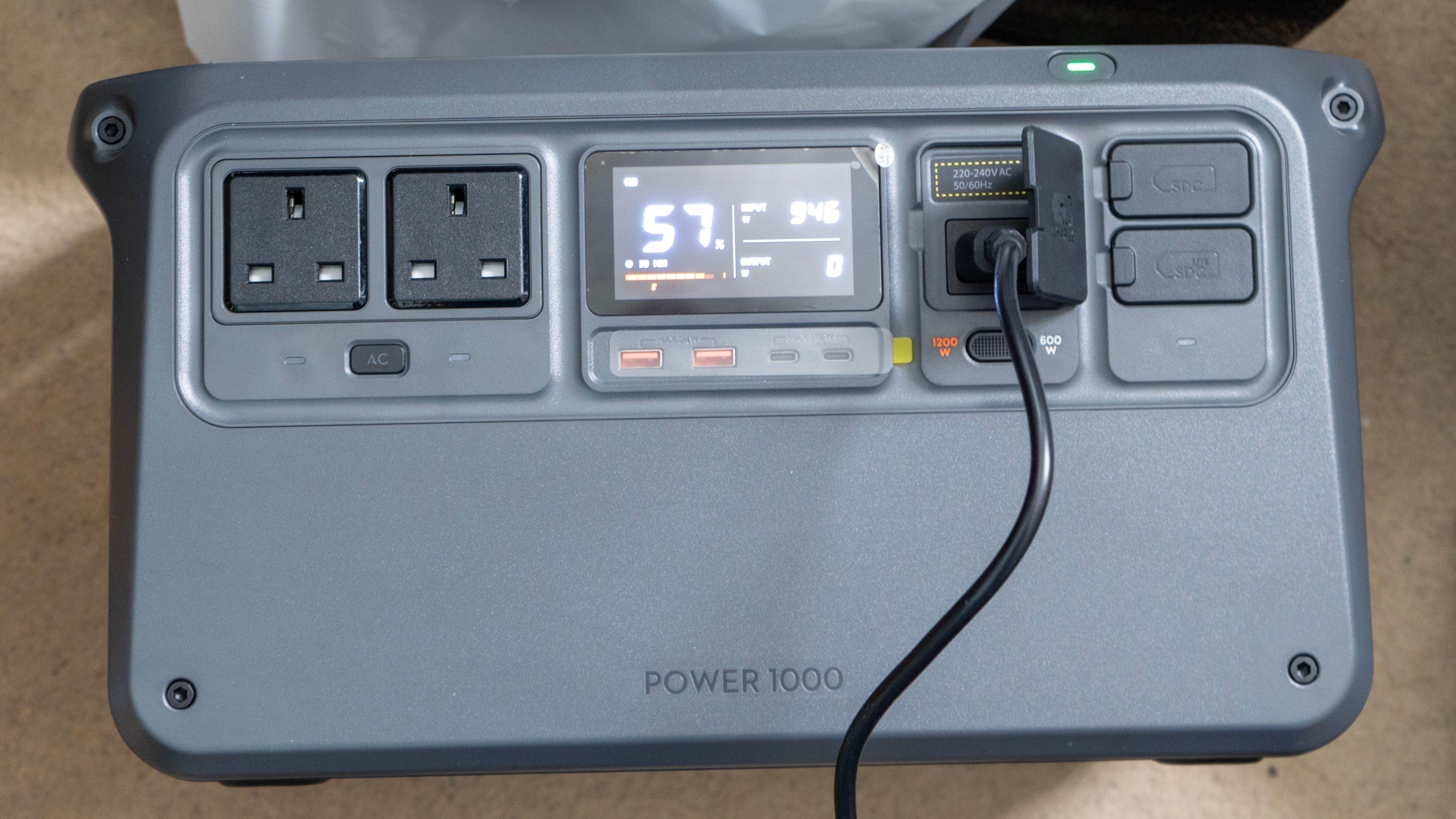
DJI Power 1000: Performance
In my tests, I had no cause for complaint. It is very much as expected and, though there is a built-in fan which came on when I tried the rapid charge, the noise was difficult to detect without leaning in!
In general, it's clear battery management is going on and I've got to say I love the simplicity of a slider switch with just two positions between rapid charging when you need it and the most battery-friendly approach.
It is also possible to disable the power safe time out so the battery doesn't power down for your low and occasional energy consumption devices, which is appreciated. The display is nice and bright (but a camping light would have been useful).
Incidentally, if you buy this in the US, it comes with US AC outlets – the version I've photographed has UK outlets because (you've guessed it) I'm in the UK!

Overall verdict
There isn't a great deal to say about the DJI Power 1000 because it does very much what it promises, which is great. This isn't a product category you want a lot of surprises in! It's also reassuringly built, setting off no alarm bells.
Compared to alternatives, those looking at it in terms of power stations may (reasonably) feel it is a bit disappointing in terms of specifications. There is no solar controller built-in (it is an accessory DJI offer), nor is there an app to monitor things like battery health over time – all features that I've seen on devices like the Anker Solix C1000 (see below) which has similar capacity. Actually, though, the most useful feature for campers of that device which is missing here is a built-in light to illuminate the area.
Where the device does shine you might argue that the choice of two USB-A and two USB-C ports isn't ideal – sure, the symmetry is better but USB-C is more common now and delivers power faster to DJI devices from RC controllers to Mics, but it depends on your needs.
Ultimately, this device has a (literal) quiet dependability, and those powering a set or a flying session will likely be very pleased with it, though campers might want to consider their options.
Alternatives
The Anker Solix C1000 is designed with a more diverse range of options in mind – it has more AC sockets and a light built-in, as well as an app for remote control of the light and to monitor battery health (but no drone fast charging).
Read my full review of the Anker Solix C1000.

With over 20 years of expertise as a tech journalist, Adam brings a wealth of knowledge across a vast number of product categories, including timelapse cameras, home security cameras, NVR cameras, photography books, webcams, 3D printers and 3D scanners, borescopes, radar detectors… and, above all, drones.
Adam is our resident expert on all aspects of camera drones and drone photography, from buying guides on the best choices for aerial photographers of all ability levels to the latest rules and regulations on piloting drones.
He is the author of a number of books including The Complete Guide to Drones, The Smart Smart Home Handbook, 101 Tips for DSLR Video and The Drone Pilot's Handbook.
